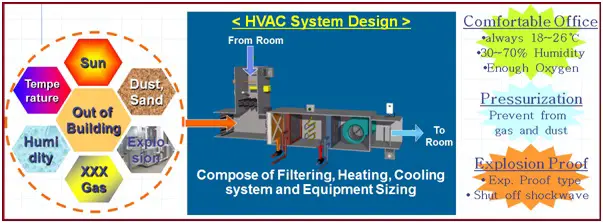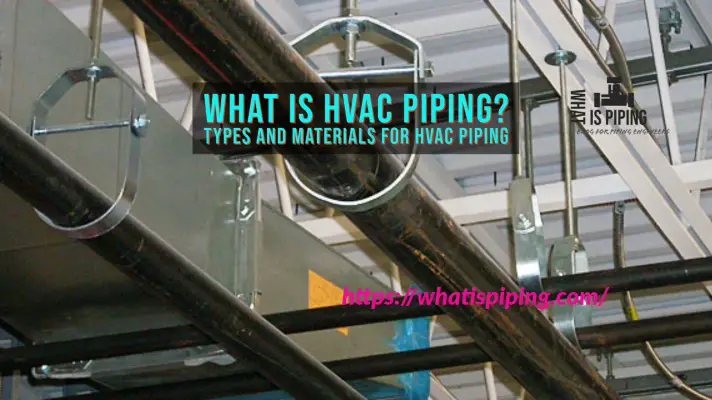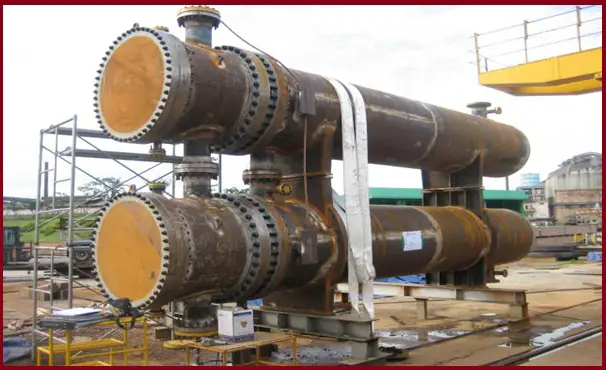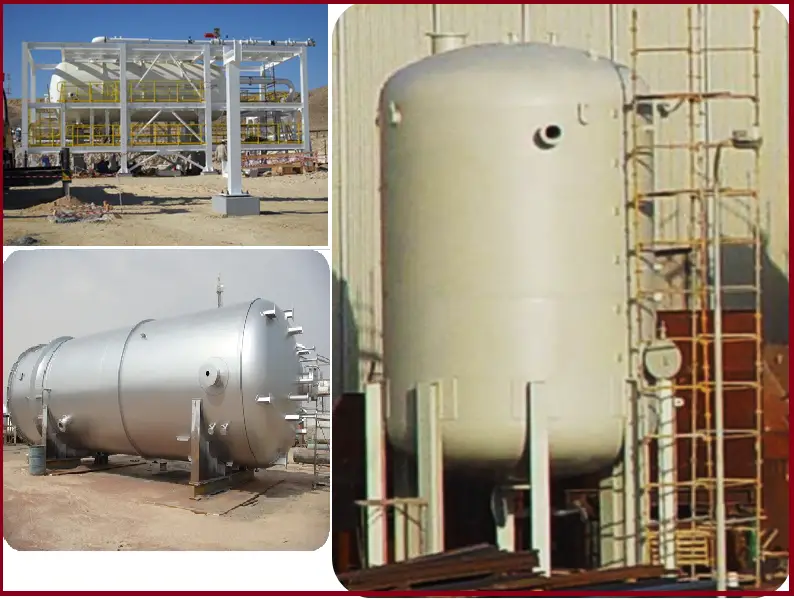We all know that Cooling towers are essential components in various industrial processes and HVAC systems. They play a crucial role in dissipating excess heat generated during these processes. However, for cooling towers to function smoothly, efficiently, and sustainably, proper water treatment is paramount. Proper water treatment Increases Energy Efficiency, Reduces the water-consumption, and Extends Equipment Life. In this blog post, we’ll explore the importance of cooling tower water treatment, its key components, and the benefits it offers. Additionally, we will learn about the cooling tower water treatment chemicals.
Why Should You Treat Cooling Tower Water?
Cooling towers rely on the evaporation of water to remove heat from processes, making them susceptible to various water-related issues such as scaling, corrosion, and biological growth. Without adequate water treatment, these problems can lead to reduced efficiency, increased maintenance costs, and even system failure. Therefore, cooling tower water treatment is essential for several reasons:
- Prevent Scaling: Scaling occurs when minerals in the water, such as calcium and magnesium, precipitate and form deposits on heat exchange surfaces. These deposits insulate the heat exchangers, reducing their efficiency and potentially causing equipment damage.
- Corrosion Control: Cooling tower components, including pipes, pumps, and heat exchangers, are often made of metal. Corrosion can lead to the deterioration of these components, compromising the system’s reliability and lifespan.
- Microbial Growth Prevention: Cooling towers provide an ideal environment for the growth of bacteria, algae, and fungi. These organisms can clog water distribution systems, degrade water quality, and pose health risks to workers.
- To control the water pH.
Effect of Changes in Water Composition
Cooling water operation changes water composition radically causing the circulating water composition really affect the system’s operation and life
Factors affecting physical and chemical properties of water
- Temperature change
- Evaporation
- Air contact
- Product contamination
Cooling Tower Water Treatment
Scaling and Fouling of Cooling Tower
Main causes:
- Scaling – Due to salts that deposit on high-temperature surfaces due to retrograde solubility
- General fouling – Due to insoluble suspended particles forming deposits on the surface
- Biological fouling -This results from abundant growth of Algae, Fungi, or Bacteria on the surface
Scale Control in Cooling Tower
- Blowdown control
- Increased Blow-down limits cycles of concentration.
- Treatment is required to keep the dissolved solids in the non-scale forming state.
- Scale inhibitors do this permitting operation at supersaturated conditions
- Acid Dosing- Sulfuric Acid
- Relatively inexpensive method
- The acid treatment removes the bicarbonate acidity by converting HCO3- to SO4 and CO2
- CO2 is released to the atmosphere and Sulfate remains as by product
- Caution – Overdosing causes corrosion
Fouling Control in Cooling Towers
- Fouling occurs when insoluble suspended particles like iron, mud, silt, and other debris deposit on the surfaces.
- Removal of suspended matter from make-up water, re-circulating water, basin by use of Side-stream filters (filtering 1-5% of the total circulation)
- High Water Velocities- A design stage measure for deposit control. This is always not possible ( Shell side)
- Dispersants-Keep the particulates in suspended form
- Surfactants-Keep the Hydrocarbons in emulsified form
Controlling Corrosion in Cooling Tower
- Achieved by dosing a Corrosion inhibitor. This primarily works by forming a protective film on the surface.
- Different types of treatments:
- Chromate based program
- Phosphate/ Phosphonate Programs
- Di-anodic
- Alkaline Zinc
- Alkaline Phosphate Program
- All Organic
- Molybdate based
Micro-Biological Control in Cooling Tower
- Microorganisms enter through wind, dust, and make-up water
- Results in Slime and algae growth
- Important to minimize slime and algae growth as they reduce
- heat transfer
- decrease cooling water flow
- localize corrosion
- serve as a mortar for the rapid buildup of deposits
- Control is done by dosing chemicals
- Biostatic agents: Chemicals that inhibit the growth of microbes
- Biocides: Chemicals that kill the microorganisms
- Advisable to use biocides in the cooling water treatment – two classes :
- Oxidizing Biocides: Chlorine, bromine, Hypochlorite, Chlorine dioxide, Ozone
- Non-Oxidizing Biocides: Methylene-bis-thiocyanate (MBT), Organotin compounds, Aldehydes, Chlorophenols, Sulphones and Thiones, Carbamates, Isothiazoline
- Biofouling – accumulation of deposits of microorganisms forming films
- Biodispersants are used for dislodging the biofilms and preventing their formation
- Followed by the addition of biocide which kills the released bacteria
pH Control in Cooling Tower
- Important to minimize the rate of corrosion in a heat transfer/cooling system
- To avoid corrosion problems, controlling the pH in an alkaline range of between 8 and 9 is important
- Alkaline pH has a greater tendency towards scaling from dissolved solids
- Conductivity measurement measures the level of TDS in water.
Cooling Tower Water Treatment Chemicals
For cooling towers to remain effective and reliable in a variety of industrial and commercial applications, cooling tower water treatment chemicals are crucial. Specific water-related problems like scale, corrosion, and microbiological development are addressed using these compounds. The following are some of the main compounds used in cooling tower water treatment and what they do:
Biocides:
Biocides are those chemicals that are used to control microbial growth in cooling tower water. Various microorganisms like bacteria, algae, and fungi can thrive in the warm and nutrient-rich environment of cooling towers, leading to biofilm formation and clogging. Biocides help eliminate or prevent the growth of these microorganisms, ensuring the water remains clean and free from biological fouling.
- Oxidizing Biocides: Examples include chlorine and bromine-based compounds. These chemicals are effective at killing existing microorganisms.
- Non-Oxidizing Biocides: Compounds like quaternary ammonium compounds (quats) and isothiazolinones are non-oxidizing biocides used to prevent the regrowth of microorganisms.
Scale Inhibitors:
Scaling occurs when minerals in the cooling water, such as calcium and magnesium, precipitate and form deposits on heat exchange surfaces. Scale inhibitors, often referred to as antiscalants, work by sequestering these minerals, preventing them from forming scale deposits. Common types of scale inhibitors include polyphosphates and phosphonates.
Corrosion Inhibitors:
Cooling tower components are typically made of metal, making them susceptible to corrosion. Corrosion inhibitors are chemicals that create a protective film on metal surfaces, preventing corrosion and extending the life of equipment. Common corrosion inhibitors include orthophosphates, molybdates, and filming amines.
pH Adjusting Chemicals:
Maintaining the proper pH level in cooling tower water is essential to prevent both scaling and corrosion. Chemicals such as sulfuric acid and caustic soda are used to adjust and control the pH of the water within the desired range.
Dispersants and Surfactants:
Dispersants are used to keep suspended particles and solids in the water from settling and forming deposits. Surfactants can improve the wetting ability of the water, enhancing its contact with surfaces and facilitating the removal of deposits.
Anti-Foaming Agents:
Foaming in cooling towers can reduce their efficiency by interfering with the heat transfer process. Anti-foaming agents are added to control and minimize foam formation.
Scale and Deposit Removers:
In cases where scaling or deposits have already formed, specialized chemicals may be used to dissolve and remove these accumulations. Acid-based descaling chemicals are often employed for this purpose.
Oxygen Scavengers:
Oxygen in the cooling water can promote corrosion. Oxygen scavengers, such as sodium sulfite or hydrazine, are used to remove dissolved oxygen from the water, reducing the risk of corrosion.
Dissolved Solids Control:
Cooling towers can concentrate impurities as water evaporates. To prevent the buildup of excessive dissolved solids, chemicals like phosphates and polymers are used to control their levels.








